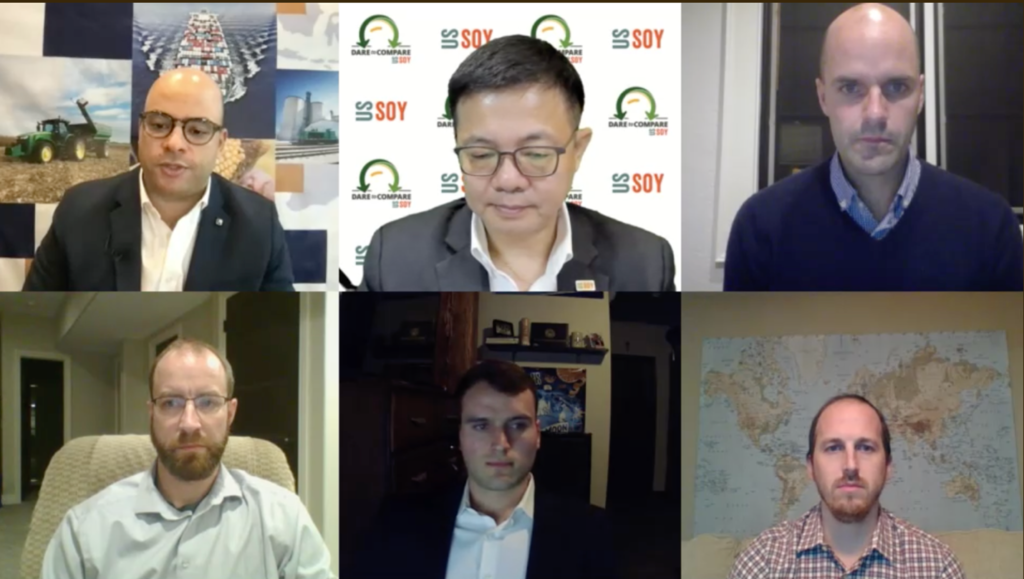Ag Exporters Share Current Industry Challenges
- Category:
- Event followup
- Virtual Events

From freight rates to trade deals, many different factors have an impact on the agricultural export industry. Increased demand has changed some areas of the export landscape, as discussed by the four panelists participating on the Ag Exporters Panel at Agricultural Supply Chain Asia. The event was hosted by the U.S. Soybean Export Council (USSEC) and U.S. Grains Council (USGC).
This panel was made up of four ag export experts, including Craig Pietig, Senior Director of Exports for AG Processing Inc.; Ben Seiler, Ingredients Export Merchandiser for Flint Hills Resources; Brian Wittenborn, Export Trade Manager for The Andersons Inc.; and Chris Crawford, Product Group Manager for The Scoular Company. USSEC’s Timothy Loh and USGC’s Manuel Sanchez moderated the discussion.
Container shipping, a major piece to the export puzzle, was a hot topic throughout the session. Though conversation usually revolves around freight rates, Wittenborn explained today’s issues go beyond shipping prices.
“It’s a daily conversation with our logistics team here of how we are going to get product from Point A to Point B, and it’s beyond the conversation of what rate gets us on a boat,” he said. “It’s more the conversation of when we can get on a boat.”
An influx of containers has caused embargoes in many ports. This back up creates a bottleneck effect that then puts strain on the U.S. handling system, Crawford explained.
As challenges persist, the industry could see buyers group together to purchase and ship more in bulk.
In addition to general industry trends, the panel focused on U.S. exports to China. They attributed China’s 2020 buying streak to several factors, including African Swine Fever recovery and domestic crop conditions within the country.
Crawford projects that streak will trickle into 2021 and depend on China’s crop conditions throughout the upcoming season.
From the soy crusher standpoint, China’s purchases can be viewed as a double-edged sword. While increased demand is a positive for U.S. Soy, it could tighten supply later in the year, Pietig explained.
Imports coming to the U.S. from China do give the country a leg up in receiving continuous shipments, Seiler said. The demand for shipments both to and from China help secure consistent service to the country.
The panel discussion concluded with questions from the audience. Those interested in this session or others from the Agricultural Supply Chain Asia event can still register and watch the recordings on demand.
